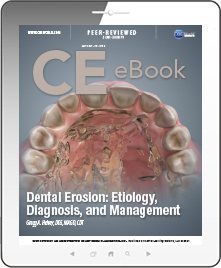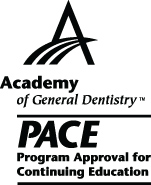CDEWorld > eBooks > Dental Erosion: Etiology, Diagnosis, and Management


ADA CERP is a service of the American Dental Association to assist dental professionals in identifying quality providers of continuing dental education. ADA CERP does not approve or endorse individual courses or instructors, nor does it imply acceptance of credit house by boards of dentistry. Concerns or complaints about a CE provider may be directed to the provider or to ADA CERP at www.ada.org/cerp/

Approved PACE Program Provider. FAGD/MAGD credit. Approval does not imply acceptance by a state or provincial board of dentistry, or AGD endorsement. 1/1/2023 to 12/31/2028. ID # 209722.
eBook
Released: Monday, May 31, 2021
Expires: Sunday, March 31, 2024
Dental Erosion: Etiology, Diagnosis, and Management
By Gregg Helvey, DDS, MAGD, CDT
Commercial Supporter: GlaxoSmithKline
The loss of tooth structure can be classified into two categories: loss occurring from disease or loss from a non-disease source. The majority of tooth structure loss from disease is a result of microbiological activity (caries). Non-disease-related tooth structure loss may be divided into the sub-categories attrition, abrasion, and erosion. Attrition is defined as the loss of tooth structure (enamel and dentin) resulting from tooth-to tooth contact. Tooth structure loss from abrasion is usually mechanical in nature, whereas, in the case of erosion, the loss of tooth structure is through chemical action. This article will focus on tooth structure loss by erosion—its etiology, diagnosis, and management.
LEARNING OBJECTIVES:
- Identify the non-disease sources of dental erosion
- Discuss the extrinsic and intrinsic causes of dental erosion.
- Recognize the patient habits and behaviors that can be used to help manage dental erosion
About the Author
Gregg A. Helvey, DDS, MAGD, CDT
Adjunct Associate Professor, Virginia Commonwealth University School of Dentistry, Richmond, Virginia
Private Practice, Middleburg, Virginia


